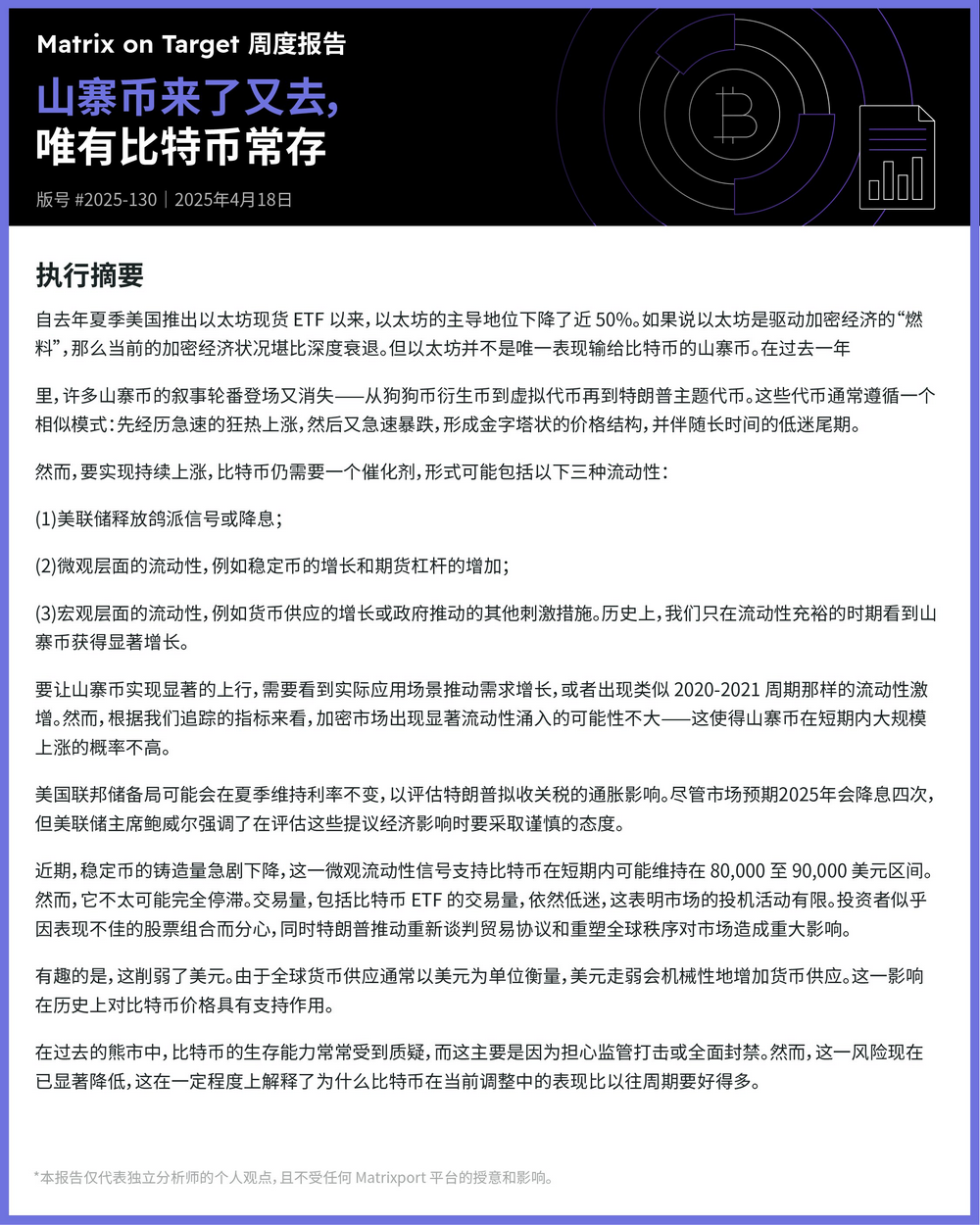PANews reported on April 18 that Matrixport pointed out that despite the ups and downs of the altcoin craze, Bitcoin remains stable. Since the launch of the Ethereum spot ETF in the United States last year, Ethereum's market dominance has fallen by nearly 50%. Many altcoins have experienced rapid rises and then rapid declines, forming a pyramid-like price structure. For Bitcoin to continue to rise, it needs liquidity catalysts, such as the Fed's release of dovish signals or interest rate cuts, stablecoin growth, and increased futures leverage. However, the current crypto market lacks a significant influx of liquidity, and the probability of a large-scale rise in altcoins in the short term is not high.
The Fed may hold off on adjusting interest rates in the summer to assess the impact of tariffs on inflation. Although the market expects four rate cuts by 2025, Fed Chairman Powell said he would carefully evaluate. Recently, the minting of stablecoins has declined, supporting the possibility that Bitcoin will remain in the $80,000 to $90,000 range in the short term. Despite the sluggish trading volume, a weaker dollar could increase global money supply, thereby supporting Bitcoin prices. In addition, the reduction in regulatory risks also makes Bitcoin perform better than before in the current market adjustment.














